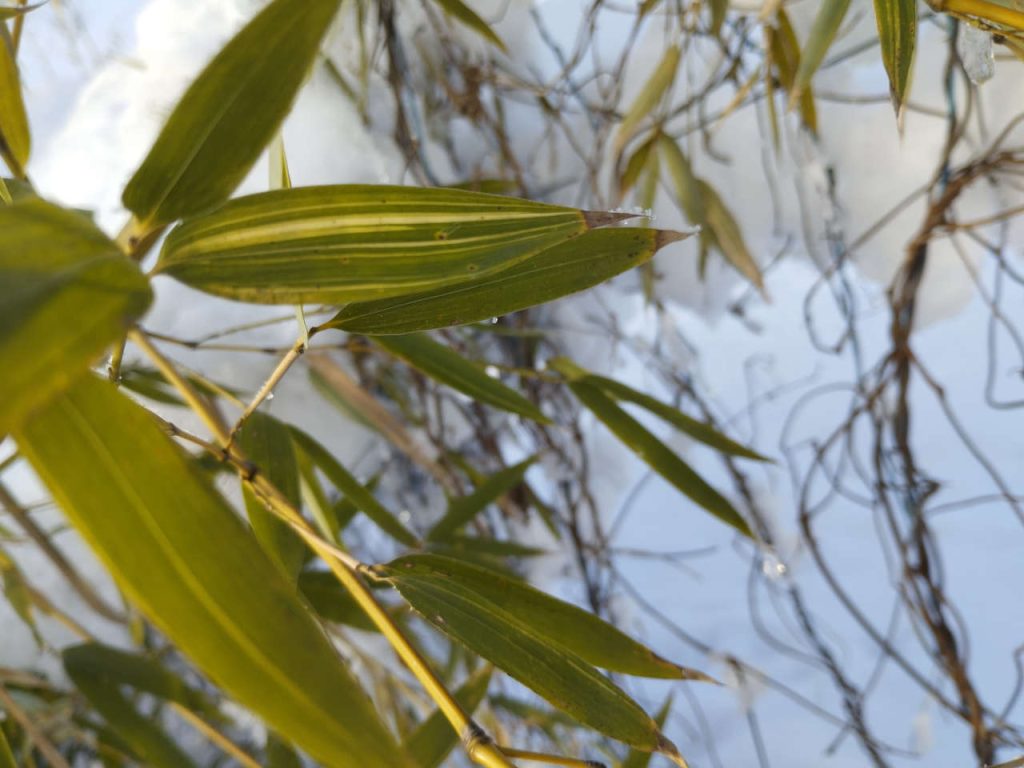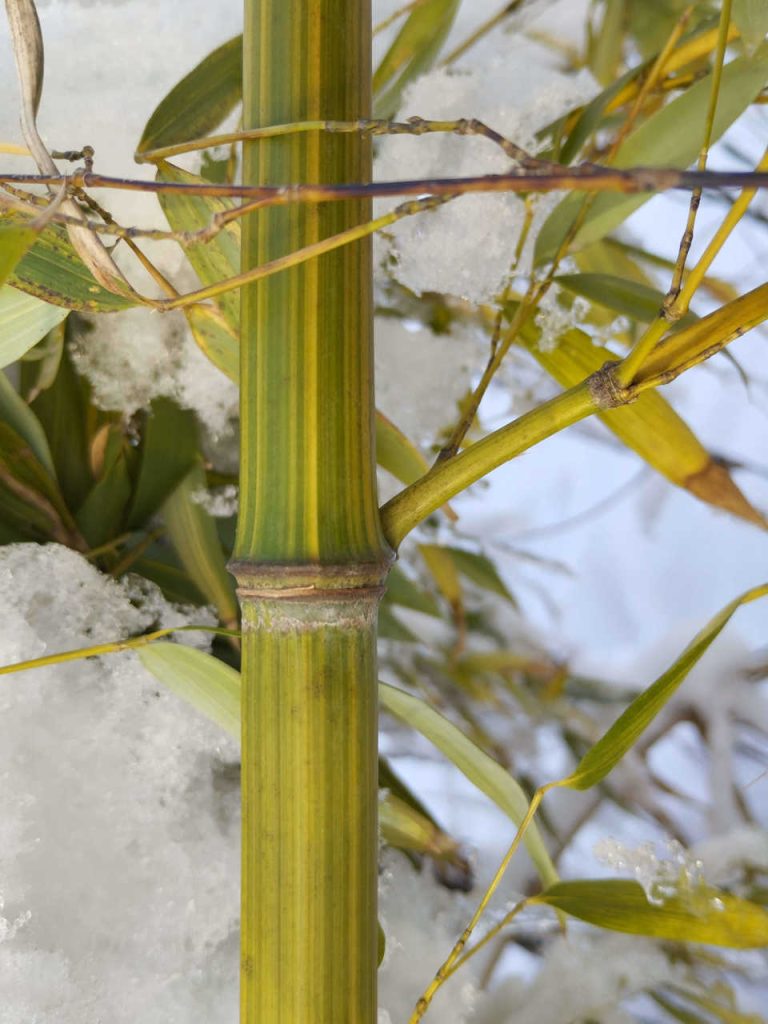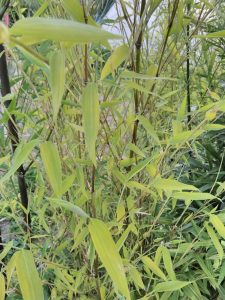Culm color of variegated Phyllostachys arcana seedlings
About the seedlings
A few years ago I started growing Phyllostachys arcana ‘Luteosulcata’ seeds and noticed 3 seedlings had a bit different leaves which could be a sign of possible variegation. As time went by, it became apparent that there were 3 seedlings that had shown different levels of variegation. All of them started more variegated in the spring and then, with passing growing season, got greener. They were much greener in the autumn and winter than they appeared in the spring, especially the third seedling, which “reverted” to almost completely green color by then.
The first seedling remains most variegated and has been struggling to grow much larger in its raised bed where resources are extremely limited and has shown drought issues during hot summer months. The first seedling doesn’t have culms large enough, so I’ll leave it out for now. Stems of the first seedling are pale green and they turn dirty yellow with time. There are green streaks on them, but due to small diameter of the culms it produces, I think it’s too early to tell how they look. The second in line based on level of variegation is the second seedling. It appears completely yellow in the spring, like its older brother, but gets darker faster and ends up more green in autumn. Due to the fact it ends up with higher chlorophyll levels, it grows faster and in much more aggressive manner.
So what about the culms
The difference in culm coloration became apparent quite early. Leaves appear almost uniformly colored – lime green, then the pigmentation settles, darker green striping forms and the paler green color turns yellow. It seems as the chlorophyll migrates into green stripes, leaving parts almost completely without green pigment. The same thing seems to happens in culms, which only show slightly different coloration at first and gradually change, so that the coloration becomes evident. As the culms mature, the coloration gets very obvious. As I already mentioned, all three variegated seedlings also have variegated culms. Pigmentation patterns couldn’t be more different though.
The second seedling’s culm coloration
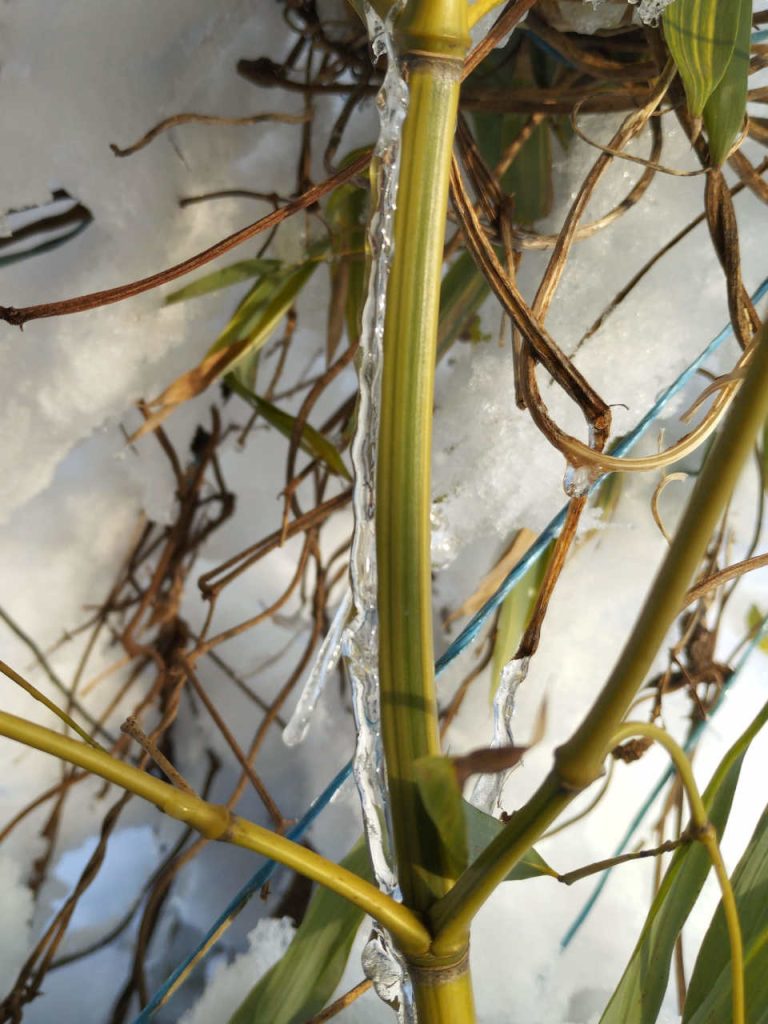

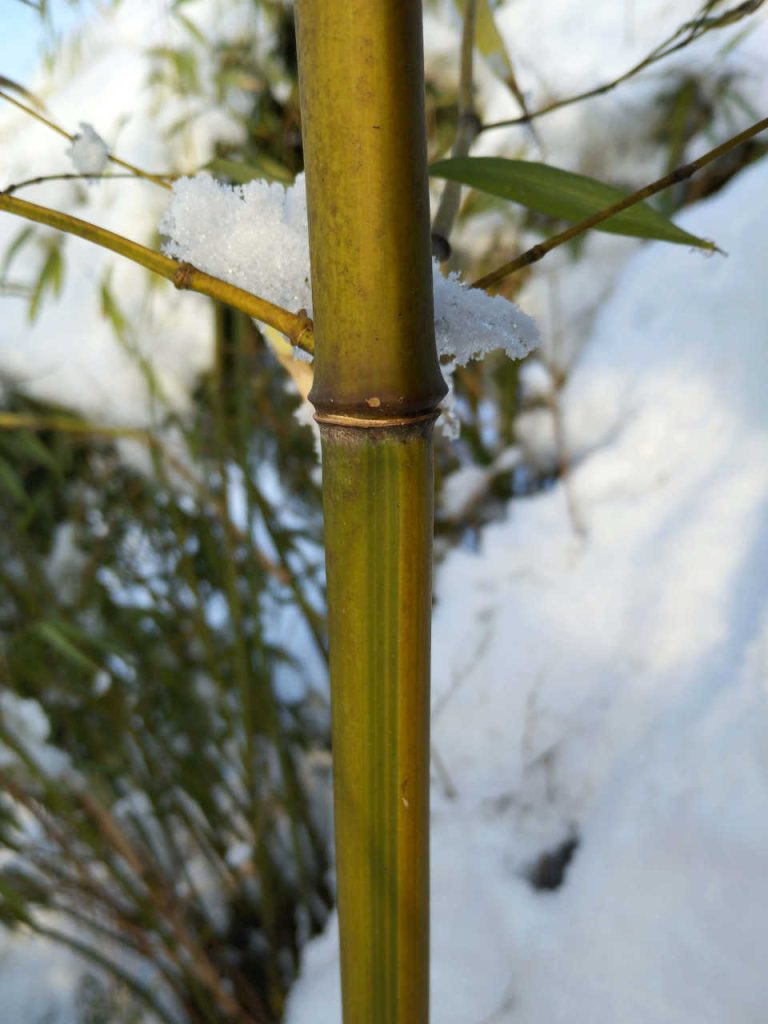
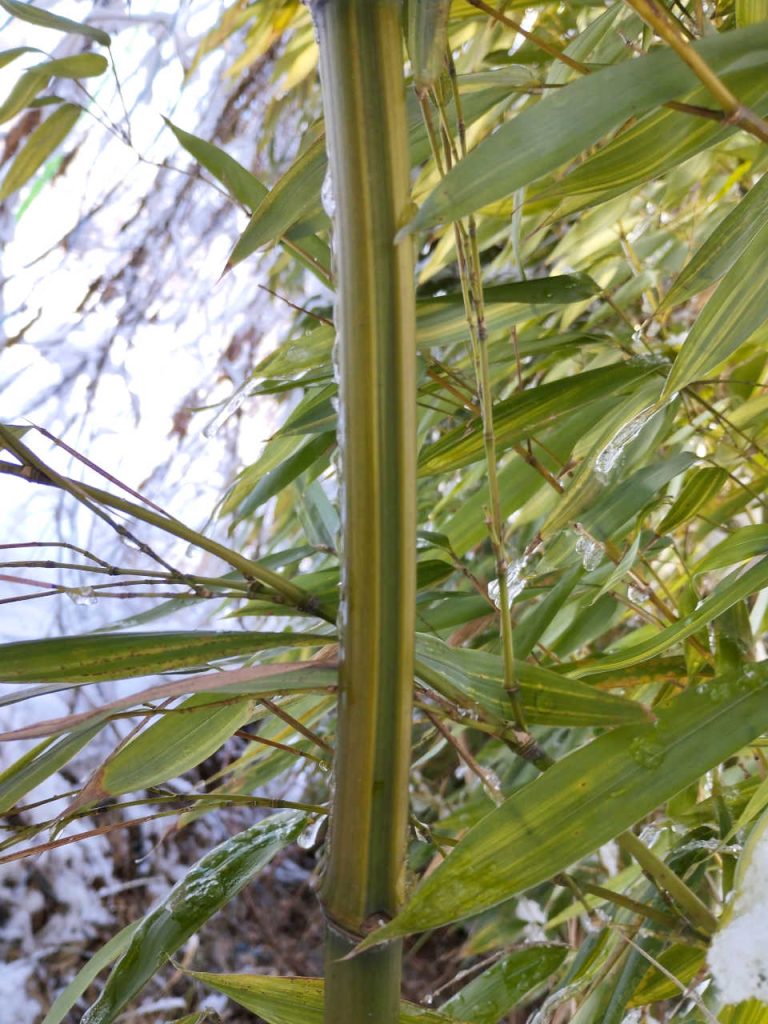
Phyllostachys arcana ‘Luteosulcata’, the mother and father of these seedlings has culms that are dark green with a bright yellow sulcus. My second seedling ended up almost as an inverted version of its parent. Lower internodes are mostly dark green with occasional striping which is not as evident as with 3rd seedling. Up the stem, things start getting more interesting. Culm starts getting more yellow, top of the bamboo gets practically completely yellow. Sulcus, however, usually gets green. And not only culms, some branches that also develop sulcus also get their green colored groove. It is not dark green, and the yellow culm color is not as bright as it could be, but the coloration is there and with time it gets more pronounced as the culms mature.
The third seedling’s culm coloration
Despite being much, much less variegated when it comes to leaf pigmentation, the third seedling develops culms that are strongly variegated. The type of variegation is similar to other seedlings – the bottom of the culm is practically green with darker green stripes that are not nearly as evident as the stripes up the stem. As you climb up the culm, color also turns more yellow, this time, sulcus doesn’t really count – variegation is different. Green and yellow striping on this seedling is randomly scattered all around culm’s surface. As with previous seedling, variegation becomes more evident with time.
